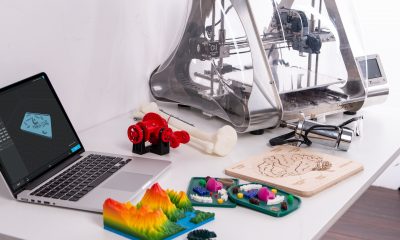In a groundbreaking development, researchers have harnessed the power of artificial intelligence (AI) to discover a new antibiotic that shows promise in combating drug-resistant bacteria. This innovative approach, detailed in a recent study published in Nature, marks a significant milestone in the ongoing battle against antimicrobial resistance (AMR), a global health crisis that threatens to undermine modern medicine.
The newly identified antibiotic, named by researchers as “halicin” after the AI system HAL from “2001: A Space Odyssey,” has demonstrated remarkable efficacy against a wide range of antibiotic-resistant bacteria, including some of the most challenging pathogens known to medical science. This discovery comes at a critical time, as the World Health Organization (WHO) has declared AMR one of the top ten global public health threats facing humanity.
The research team, led by scientists from MIT and Harvard, employed a deep learning approach to analyze vast databases of chemical compounds. By training their AI model on molecular structures with known antibacterial properties, they were able to predict and identify new compounds with potential antibiotic activity. This method represents a paradigm shift in drug discovery, potentially accelerating the process of finding new antibiotics to combat evolving bacterial threats.
Dr. James Collins, a professor of biological engineering at MIT and senior author of the study, emphasized the significance of this approach: “We’re facing a critical shortage of new antibiotics, and this AI-driven method opens up new possibilities for discovering novel compounds that can help address the growing threat of antibiotic resistance.”
The urgency of this research cannot be overstated. According to the Centers for Disease Control and Prevention (CDC), more than 2.8 million antibiotic-resistant infections occur in the United States each year, resulting in over 35,000 deaths. Globally, the numbers are even more staggering, with AMR directly responsible for an estimated 1.27 million deaths in 2019.
Halicin’s potential lies not only in its effectiveness but also in its novel mechanism of action. Unlike many existing antibiotics that target specific cellular processes, halicin appears to disrupt the bacterial cell membrane’s ability to maintain an electrochemical gradient necessary for energy production. This unique approach makes it particularly difficult for bacteria to develop resistance, a key factor in the antibiotic’s potential long-term efficacy.
Laboratory tests have shown halicin to be effective against a broad spectrum of antibiotic-resistant bacteria, including Clostridium difficile, Acinetobacter baumannii, and Mycobacterium tuberculosis. Perhaps most impressively, the compound successfully eradicated infections in mouse models that were resistant to all known antibiotics.
Dr. Regina Barzilay, a professor of electrical engineering and computer science at MIT and a key contributor to the study, highlighted the transformative potential of AI in drug discovery: “This work represents a significant advance in our ability to harness machine learning for therapeutic discovery. It demonstrates that AI can not only accelerate the drug discovery process but also help us uncover entirely new classes of antibiotics.”
The implications of this research extend beyond the immediate discovery of halicin. The AI model developed by the team has the potential to screen millions of compounds rapidly, identifying other promising antibiotic candidates. This capability could dramatically reduce the time and cost associated with traditional drug discovery methods, which often take years and billions of dollars to bring a new antibiotic to market.
However, experts caution that while this discovery is promising, it is only the first step in a long journey. Dr. Cesar de la Fuente, a presidential assistant professor at the University of Pennsylvania who was not involved in the study, commented, “This is an exciting proof of concept, but we must remember that many promising drug candidates fail in clinical trials. The road from discovery to approved medication is long and challenging.”
Indeed, the development of new antibiotics faces numerous hurdles, including stringent regulatory requirements and economic challenges. The Pew Charitable Trusts reports that many major pharmaceutical companies have abandoned antibiotic research due to low return on investment, leaving smaller biotech firms and academic institutions to lead the charge against AMR.
To address these challenges, policymakers and health organizations are calling for new incentives to stimulate antibiotic development. The PASTEUR Act, introduced in the U.S. Congress, proposes a subscription-style model for antibiotic reimbursement, aiming to make antibiotic development more financially viable for pharmaceutical companies.
Meanwhile, global initiatives like the AMR Action Fund, a partnership between pharmaceutical companies, philanthropic organizations, and the WHO, are working to bridge the funding gap in antibiotic research and development. These efforts underscore the recognition that combating AMR requires a coordinated, global response.
As research on halicin and other AI-discovered antibiotics progresses, scientists are also emphasizing the importance of responsible antibiotic use. Dr. Ramanan Laxminarayan, director of the Center for Disease Dynamics, Economics & Policy, notes, “While new antibiotics are crucial, we must also focus on antibiotic stewardship and infection prevention to preserve the effectiveness of both existing and future antibiotics.”
The discovery of halicin through AI represents a beacon of hope in the fight against AMR. It demonstrates the potential of cutting-edge technology to address one of the most pressing public health challenges of our time. As this research moves forward, it may herald a new era in antibiotic discovery, offering new tools to combat the relentless evolution of bacterial resistance.
The journey from AI-assisted discovery to clinical application is just beginning, but the potential impact on global health is immense. As we stand on the brink of this new frontier in medical science, the collaboration between human ingenuity and artificial intelligence offers a promising path forward in our ongoing battle against infectious diseases.


 Home4 years ago
Home4 years ago
 Medical4 years ago
Medical4 years ago
 Gadgets4 years ago
Gadgets4 years ago
 Environment4 years ago
Environment4 years ago
 Medical4 years ago
Medical4 years ago
 Energy4 years ago
Energy4 years ago

